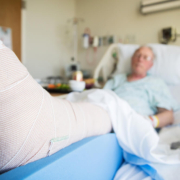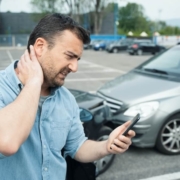Are Auto Accidents More Common in Rural or Urban Areas?
Whether you live in a rural or urban area, you have likely seen your fair share of car accidents. However, urban and rural accidents are different in a variety of ways—and unfortunately, those differences have led to serious differences in outcomes for drivers and passengers. Knowing what to expect from both rural and urban crashes can help you better protect yourself as you travel.
If you or someone you love has been injured in a car accident, you could be entitled to compensation. Find out now by calling the team at Olmstead & Olmsted at 703-260-8752.
Driving Differences in Rural and Urban Areas
Knowing the differences in driving styles between rural and urban areas can help you adjust your habits accordingly and make safe choices while on the road. In rural areas, you will find less congested roads. Unfortunately, those same roads are more likely to be poorly lit, have unclear signage, and not get the same level of upkeep as urban roads. You may also find that these areas have winding roads, one-lane roads, and unexpected wildlife.
On the flip side, urban roads are known for their dense traffic. This means lots of starting and stopping, navigating stoplights and stop signs at every intersection, and plenty of pedestrians and bicyclists. The traffic-heavy nature of urban driving also means you may run into more aggressive drivers.
Statistics on Rural and Urban Crashes
What does the National Highway Traffic Safety Administration say about rural and urban crashes? Across the board, crash rates are higher than they should be. In 2020, there were nearly 39,000 fatal crashes. A full 43% of those crashes took place in rural areas, while 56% happened in urban settings. Without context, these numbers support the claim that urban areas are more dangerous.
However, you also have to consider how busy urban roads are. With how many more drivers you’ll find on urban roads, you would expect a much larger gap between urban and rural fatalities. Rural areas have 19% of the population and just 31% of total miles traveled, and yet the fatal accident rate is higher than both of those numbers. This indicates that while urban areas may have more crashes, rural areas are more dangerous. Each individual driver in a rural area is at greater risk of a fatal crash than each individual urban driver.
How Drivers and Passengers Are Affected
Where your accident occurs significantly affects your outcomes. Vehicle occupants in rural areas often have longer emergency response times, which means more time for injuries to worsen and potentially become fatal. Additionally, the higher speed limits found on rural roads mean that a crash is more likely to be severe than a crash on a lower-speed urban road.
On the other hand, urban settings have far more bicyclists and pedestrians than rural areas. These groups are extremely vulnerable, and so you may see more pedestrian and bicyclist fatalities in cities.
Efforts to Improve Outcomes
The good news is that there are efforts across the board to improve outcomes for passengers and drivers. Rural areas are seeing greater investments in road infrastructure, improving road quality, signage, and intersection safety.
Public safety and education are always a big part of improving outcomes in traffic crashes. These efforts continue in both rural and urban settings, with a major focus on driving safety, distracted driving, impaired driving, and speeding.
Emergency response involvement is another area of focus in various parts of the country. Experts have realized that making emergency care more widely accessible and available in rural areas can lead to fewer fatalities and fewer severe injuries. This requires significant financial investment.
Technology also plays a role in making roads safer. Cars themselves are making it easy to drive safer, with crash avoidance technology, tech that tells you when you are drifting out of your lane, and data on driving habits.
Start Your Personal Injury Claim with Olmstead & Olmstead
No matter where your accident occurred, it’s important to discuss your legal options with an attorney as soon as possible. The team at Olmstead & Olmstead is committed to helping you fight for compensation. Call us at 703-260-8752 or reach out to our team online.













Leave a Reply
Want to join the discussion?Feel free to contribute!